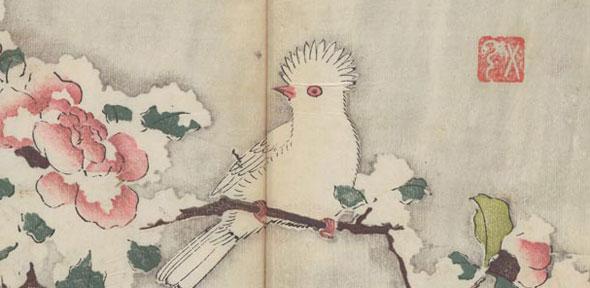
The treasures of Cambridge University Library’s Chinese collections are the latest addition to the Digital Library website (http://cudl.lib.cam.ac.uk/collections/chinese) which already hosts the works of Charles Darwin, Isaac Newton and Siegfried Sassoon, as well as unique collections on the Board of Longitude and the Royal Commonwealth Society.
The oracle bones (ox shoulder blades and turtle shells) are one of the Library’s most important collections and are the earliest surviving examples of Chinese writing anywhere in the world. They are the oldest form of documents owned by the Library and record questions to which answers were sought by divination at the court of the royal house of Shang, which ruled central China between the 16th and 11th centuries BCE. (http://bit.ly/1RJkZEG).
As the earliest known specimens of the Chinese script, the oracle bone inscriptions are of fundamental importance for Chinese palaeography and our understanding of ancient Chinese society. The bones record information on a wide range of matters including warfare, agriculture, hunting and medical problems, as well as genealogical, meteorological and astronomical data, such as the earliest records of eclipses and comets.
Never before displayed, three of the 800 oracle bones held in the Library can now be viewed in exquisite detail, alongside a 17th-century book which has been described as 'perhaps the most beautiful set of prints ever made' (http://bit.ly/1fMfAf3). Estimated to be worth millions on the open market, the ‘Manual of Calligraphy and Painting’ was made in 1633 by the Ten Bamboo Studio in Nanjing.
Charles Aylmer, Head of the Chinese Department at Cambridge University Library, said: “This is the earliest and finest example of multi-colour printing anywhere in the world, comprising 138 paintings and sketches with associated texts by fifty different artists and calligraphers. Although reprinted many times, complete sets of early editions in the original binding are extremely rare.
“The binding is so fragile, and the manual so delicate, that until it was digitized, we have never been able to let anyone look through it or study it – despite its undoubted importance to scholars.”
Other highlights of the digitisation include one of the world’s earliest printed books http://bit.ly/1HRsK0k), a Buddhist text dated between 1127 and 1175. The translator (Xuanzang) was famed for the 17 year pilgrimage to India he undertook to collect religious texts and bring them back to China.
‘The Manual of Famine Relief’ has also been digitised. This 19th-century manuscript contains instructions for the distribution of emergency rations to famine victims and includes practical advice about foraging for natural substitutes to normal foodstuffs in the event of an emergency.
Elsewhere, a 14th-century banknote (http://bit.ly/1O8QJwB) is one of the more unusual additions to the Chinese Collections. Paper currency first appeared in China during the 7th century, and was in wide circulation by the 11th century, 500 years before its first use in Europe.
By the 12th century the central government had realised the benefits of banknotes for purposes of tax collection and financial administration, and by the late 13th century had printed and issued a national paper currency – accounts of it reached Europe through the writings of Marco Polo and others.
The Library’s banknote, printed on mulberry paper from a cast metal plate, was first issued in 1380. The denomination of the banknote (one thousand cash) is shown by a picture of ten strings of copper cash (10 x 100 = 1000), flanked by a text in seal script which reads: 'Great Ming Paper Currency; Circulating Throughout the World'. The text underneath threatens forgers with decapitation and promises that anyone denouncing or apprehending them will receive not only a reward of 25 ounces of silver but also all the miscreant’s property.
Huw Jones, part of the digitisation team at Cambridge University Library, said: “The very high quality of the digital images has already led to important discoveries about the material – we have seen where red pigment was used to colour inscriptions on the oracle bones, and seals formerly invisible have been deciphered on several items. We look forward to new insights now that the collection has a truly global audience, and we are already working with an ornithological expert to identify the birds in the Manual of Calligraphy and Painting.”
Cambridge University Library acquired its first Chinese book in 1632 as part of the collection of the Duke of Buckingham, but the first substantial holdings of Chinese books came with the donation of 4,304 volumes by Sir Thomas Wade (1818–1895), first Professor of Chinese in the University from 1888 until his death.
The Chinese collections at Cambridge University Library now number about half a million individual titles, including monographs, reprinted materials, archival documents, epigraphical rubbings and 200,000 Chinese e-books (donated by Premier Wen Jiabao in 2009).
A banknote from 1380 that threatens decapitation, a set of 17th-century prints so delicate they had never been opened, and 3000-year-old ‘oracle bones’ are now freely available for the world to view on the Cambridge Digital Library.

The text in this work is licensed under a Creative Commons Attribution 4.0 International License. For image use please see separate credits above.



